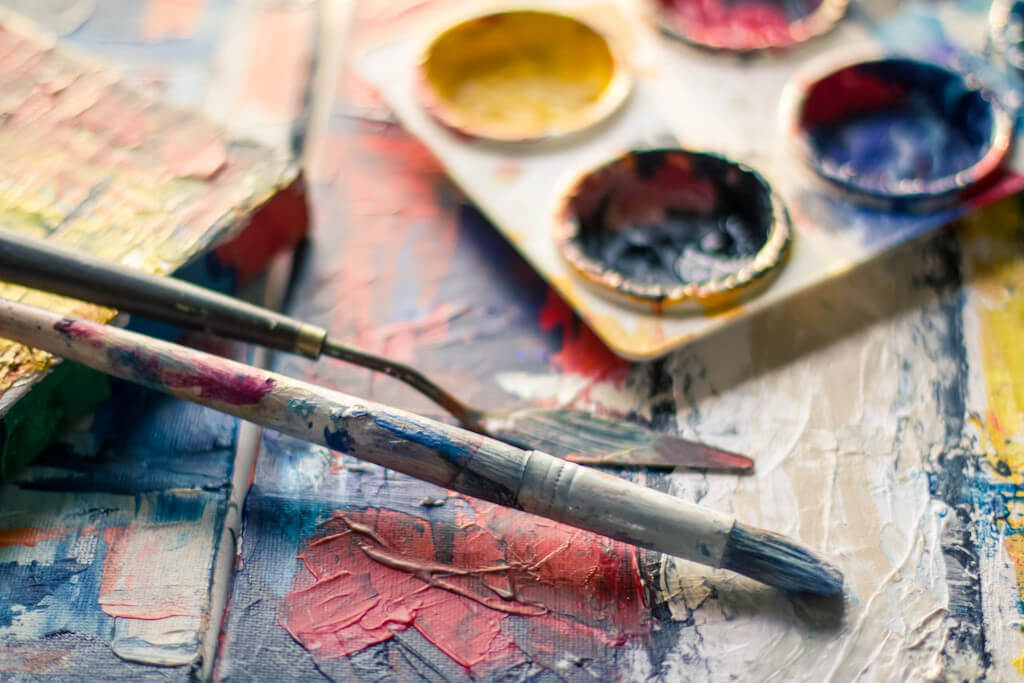Improve Both Your Creative Capacity and Your Personal Efficiency
The time may have come to stop putting off acting on your creative aspirations. You may be surprised at how simple it is to initiate new creative routines, which can help you become more effective as an individual.
Being Receptive to New Experiences is Essential to Creative Thinking
This has nothing to do with creative brilliance. Instead, it’s about making a conscious effort to incorporate creative pursuits into your day-to-day routine. You should permit yourself to investigate the territory of not knowing, and then observe what transpires as a result.
In the context of day-to-day activities, uniqueness and receptivity to novel experiences are referred to as “small-c” creativity or “everyday creativity,” respectively. Everyone possesses the ability to create, regardless of whether they are famed artists or ordinary people who want to test their skills in a new endeavor.
During the lockdown, I found that I had some additional time on my hands in addition to some additional motivation. Because of this, I decided to give baked goods a shot, which was something I’d often considered doing but hadn’t done before. The procedure involved messy hands, ecstatic occasions, and profoundly original thinking on everyone’s part. But after a few attempts, I gave up on baking altogether.
I had begun working on a book in the year leading up to the COVID-19 pandemic, but I was in no way close to finishing it. As a result of the significantly less stressful life, I decided to devote more time to writing. I made a pact with myself that I’d sit down and write for at least ten minutes every day, irrespective of the piece’s quality. Today, a few years later, I’m excited to announce that I’ve finished writing that book about starting over after the age of 50, and I’m looking for a publishing company to take it on. Here are some suggestions for how to reconnect with the artistic side of your personality:
Make Use of the Positive Aspects of Your Personality to Help You Develop New Creative Routines
Your capabilities for thoughts, being, emotions, and behaving are all examples of your positive traits. Among the 24 prevalent personality characteristics that psychologists have observed is creativity, but that’s not all of them. These qualities can be found in people of all different cultures, and their prevalence can be measured. Therefore, each of us possesses these strengths, although the relative importance of these strengths to each of us varies.
The great news is that we have the potential to cultivate and expand our strengths. In the illustrations that were presented earlier, the utilization of my character strengths of a passion for learning, inquisitiveness, and tenacity served to bolster my newly developed creative routines. My potential and my creative ability have both grown as a result of these strengths.
Incorporate a Practice of Mindfulness Into Your Creative Routine
Exercising your creativity by performing something novel or unconventional while maintaining focused attention on what you’re doing can be beneficial. Several benefits, such as task focus, concentration, kindness, and self-regulation, have been affiliated with mindful awareness, according to research evidence. These positive aspects of mindful awareness are essential tools for creative work. There are many straightforward ways to engage in awareness. Just a few of them are as follows:
- Take a moment to reflect on the present while you’re going about your day.
- Pay attention to the rhythm of your breath as you take in and let out breaths.
- Merely pay close attention and bring a mindful awareness to the fact that you are engaging in an activity that pleases you.
- You can try out an insight meditation by listening to a podcast, reading a book about mindful awareness, or using an app on your smartphone.
Make It a Routine to Incorporate Creative Practices
The act of being creative requires you to be open and receptive to new experiences. Permit yourself to acknowledge that creativity can take place in a variety of ways and can be expressed in a variety of ways. What might happen if, in your day-to-day life, you tried experimenting with having more flexibility, more open-mindedness, and more artistic expression? What if you were more adaptable to changes in your personal life as well as in your professional life and could see things in different ways? What if you attempted to discover more original and useful solutions to the problems you face by being more creative?
Kids Have an Innate Capacity for Creativity
In a similar vein, adults can foster and cultivate our originality as well as our self-expression, particularly our creativity in our everyday lives. We can experiment with our day-to-day activities and experiences no matter what else is going on in our lives. A creative epiphany doesn’t have to be about any product at all; rather, it simply refers to the purpose and the procedure of opening oneself up to fresh or unforeseen interactions in additional ways.
The Buddhist concept of the beginner’s mind refers to a state in which one abandons preconceived notions and attempts to see things as they truly are. You should permit yourself to investigate the territory of not knowing, and then observe what transpires as a result. The following are some possible routes to developing creative routines:
- Make your way to a brand-new location or back to an old one using a route or transportation method that is different from what you normally take.
- Create a song or a poem that rhymes.
- Try performing a routine task either at your place of employment or at your home in a different way, or with a hand that is not typically your dominant one.
- Build something out of wood or fix up something that’s broken.
- If you’ve just finished listening to a radio program or reading an article, try writing down a few of your thoughts or coming up with a short poem.
- You might want to reorganize some of the things in your home.
- Participate in a game that stimulates your imaginative and imaginative thinking.
- Explore a new task or expand your knowledge on a topic that already piques your curiosity.
- Try your hand at coming up with original answers to common issues, then put those answers to the test.
- Engage in some kid-on-kid or teen-on-teen conversation by having some fun with a kid.
- Sing in the bath or while you’re driving.
- Have a good time while you practice your dancing skills.
- Participate in a music event, show, or play, either in person or virtually, and enjoy it.
- You could start a small vegetable patch or grow a few seedlings on your window sill.
- Try your hand at playing the drums or a musical instrument.

